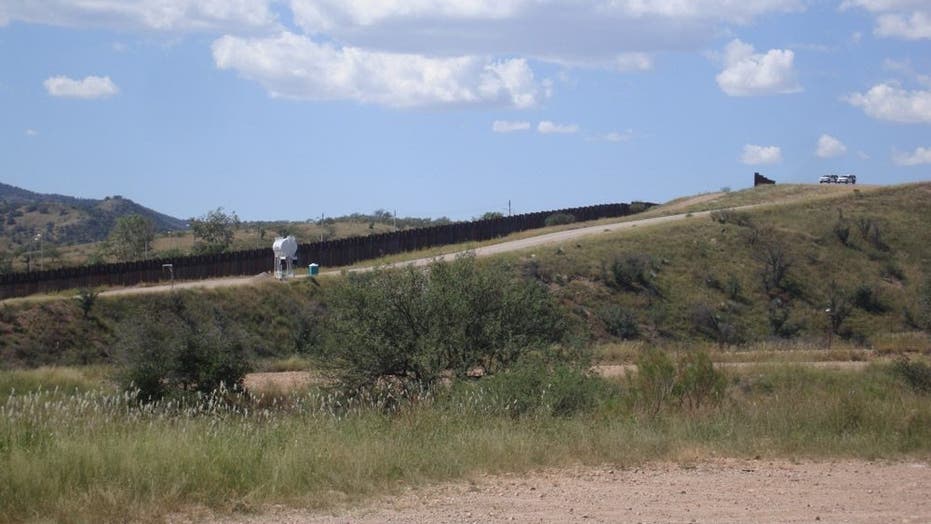New York based documentary photographer Jonathan Hollingsworth is using his art form to bring awareness to the dangers undocumented immigrants face when trying to cross the U.S./Mexico border.
In a fall 2011 trip to Pima County in Southern Arizona, Hollingsworth took a series of photos which he is putting together in: “Left Behind: Life and Death Along the Arizona Border,” which Hollingsworth hopes to publish through Kick Starter.
Below, Hollingsworth describes in detail to FOX News Latino how the project came about.
Fox News Latino: How did you hear about what was going on in Arizona?
JH: In the summer of 2010 I read a “New York Times” article about the Pima County Forensic Science Center which had purchased a second refrigerated trailer to store the growing number of border crossers’ remains in what was a year of record migrant deaths. I continued following the issues in Pima County, but it wasn’t until August of 2011 that I received permission to photograph onsite.
Fox News Latino: What was your initial inspiration for this project?
JH: While I knew that I wanted to photograph the day-to-day operations of the Center, capturing imagery that no one normally gets to see, I also wanted to create a visual memorial to the individuals who lost their lives in the crossing. The Times article mentioned the center’s archive of sleeved personal effects belonging to the unidentified, and I knew then, that that’s what I wanted to focus on.
Fox News Latino: What was the process you went through in taking the photos?
JH: My primary intention was to photograph the Forensic Science Center and the sleeves of personal effects, but while I was in Arizona, other ways of telling the story presented themselves that I hadn’t anticipated. I travelled to Green Valley, 30 miles south of Tucson, where the co-founder of Green Valley Samaritans, which provides aids to migrants in need, led me to a ‘layout site’ where migrants wait for roadside pickup at night and are told to leave all of their belongings from their journey. So I was photographing water bottles, blankets, backpacks, empty cans and clothing – all distressed and bleached from the effect of the sun. I also photographed the county’s indigent cemetery where the John and Jane Does were buried, until the number of deaths became so great that cremation became the county’s only tenable option for handling the human remains.
Fox News Latino: Was it an emotional experience?
JH: Because my primary concern was getting the images, I couldn’t let myself become emotionally affected while I was working. It wasn’t until the end of the day, when I’d unloaded my equipment and started looking through the day’s pictures that I really felt the haunting impact of them. I’ve looked at these pictures dozens of times, and that feeling hasn’t gone away. Which means I must have done my job.
Fox News Latino: Did you talk with anyone at the medical examiner's office or border patrol?
JH: While working at the Forensic Science Center, I had the chance to speak to a range of individuals whose jobs largely (or entirely) entail dealing with the effects of illegal immigration—the chief medical examiner and his team who conduct autopsies; the anthropologists who evaluate the remains for indication of age, gender, race, and the nature of the death; doctoral students; and the individuals who oversee the intake and storage of the remains. I have the greatest respect for the work that they do.
On my last day in Arizona, while photographing the border fence in Nogales with my hulking camera, I was there less than 5 minutes before the Border Patrol was on me, asked what I was doing, and quickly suggested that I shoot somewhere else.
Fox News Latino: What do you hope this project will accomplish?
JH: Hopefully, these photos give a different perspective on immigration. In the national discourse, our policy makers are quick to paint migrants as shadowy figures passing through the desert at night. But they are fathers and sons, mothers and daughters -- individuals making a treacherous journey for the chance at a better life.
The day before I left for Arizona, my parents were visiting me in New York and we took the ferry to Ellis Island. Walking through the halls that had been witness to millions of immigrants coming here for the same reason as the border crossers in the Sonoran Desert, I couldn’t help but think that the current system fails the people on both sides of the fence.
For more on Hollingsworth and the “Left Behind: Life and Death Along the Arizona Border”, visit kickstarter.com
You can reach Kacy Capobres at:
KacyJayne@gmail.com or via Twitter: @KacyJayne
Follow us on twitter.com/foxnewslatino
Like us at facebook.com/foxnewslatino

